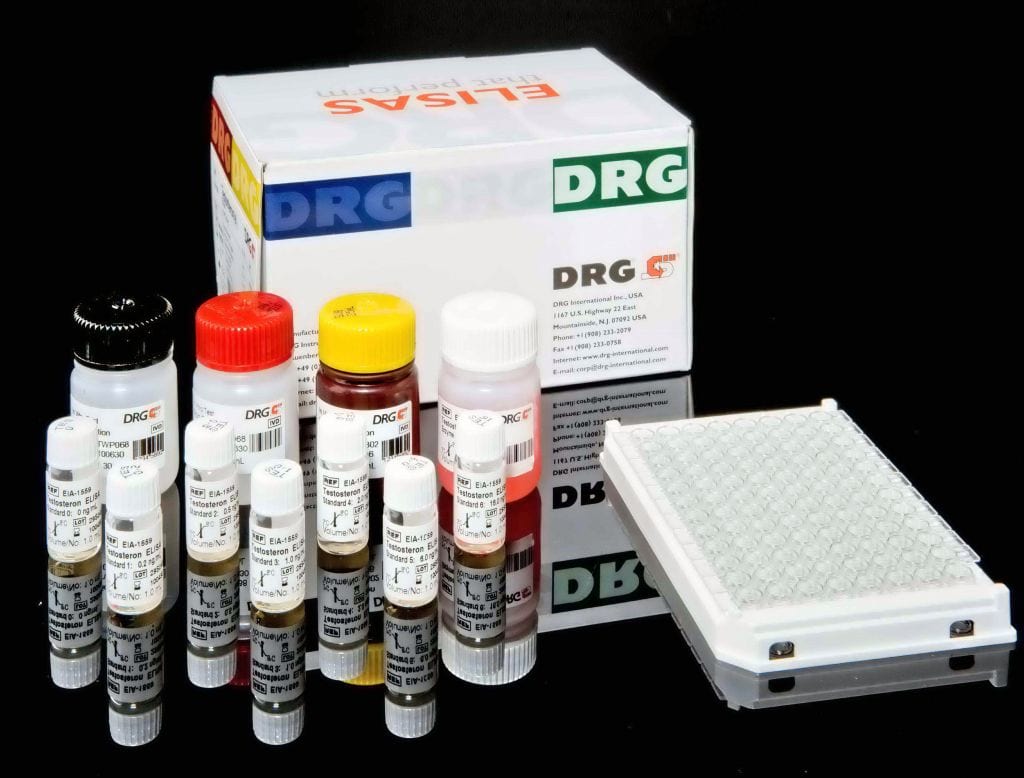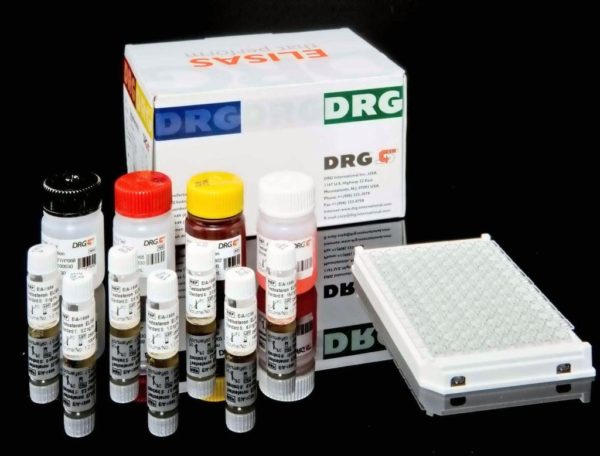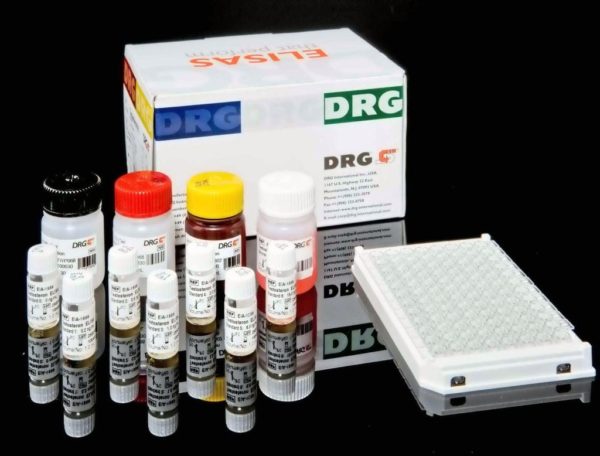Description
Anti-Lactoferrin ELISA is a test system for the quantitative measurement of IgG class autoantibodies against Lactoferrin in human serum or plasma.
This product is intended for professional in vitro diagnostic use only.
Highly purified Lactoferrin is bound to microwells. Antibodies against the coated antigen, if present in diluted patient sample, bind to the respective antigen. Washing of the
microwells removes unbound unspecific serum and plasma components. Horseradish peroxidase (HRP) conjugated anti-human antibodies immunologically detect the bound patient antibodies forming a conjugate-antibody-antigen complex. Washing of the microwells removes unbound conjugate. An enzyme substrate in the presence of bound conjugate hydrolyzes to form a blue colour. The addition of an acid stops the reaction forming a yellow end-product. The intensity of this yellow colour is measured photometrically at 450nm. The amount of colour is directly proportional to the concentration of antibodies present in the original sample.
Anti-neutrophil cytoplasmic antibodies (ANCA) represent a group of autoantibodies directed towards cytoplasmic components of the neutrophil granulocytes and monocytes. The classical methods for the determination of ANCA are immunofluorescence tests. With these indirect immunofluorescence (IF) techniques two main patterns are distinguished: a
cytoplasmic (cANCA) and a perinuclear (pANCA) type. The target antigen for 80-90 % of cANCA is proteinase 3 (PR3), a serine proteinase present in primary granules; 10_20 %
of cANCA are directed to other proteins, such as bactericidal permeability-increasing protein (BPI). In rare cases, antibodies to elastase (4 %), lysozym (2 %) or cathepsin G (2 %) may show a cANCA-pattern. cANCA have also been detected in different non-rheumatic diseases. Approximately 90 % of pANCA positive sera contain autoantibodies directed to myeloperoxidase (MPO), which is located in the granules of neutrophil granulocytes. Antibodies to other antigens e.g. Lactoferrin, Elastase, Cathepsin-G and also Lysozyme often result in a similar pANCA pattern. These atypical pANCA occur in collagenosis and related inflammatory rheumatic diseases. Besides, different untypical variants of pANCA IF patterns _ granulocyte specific antinuclear antibodies (GS-ANA) _ are indistinguishable from pANCA. Therefore, a distinct interpretation and classification of the IF patterns is difficult and every positive IF-ANCA finding should be differentiated by ELISA techniques using the purified single antigens. Lactoferrin (LF) is an iron-binding protein with
physiological anti-microbial effect and it is a non-specific anti-phlogistic refence factor at mucosal surfaces. Lactoferrin occurs in secretions such as milk, tears and saliva. Lactoferrin also resides in the specific granules of polymorph nuclear neutrophil leukocytes (PMN). During active inflammatory disease, raised serum levels of Lactoferrin can be measured. Autoantibodies against Lactoferrin belong to the pANCA group. They occur in higher frequency in patients with rheumatoid vasculitis (RV), ulcerative colitis (CU) and primary sclerosing cholangitis (PSC).




